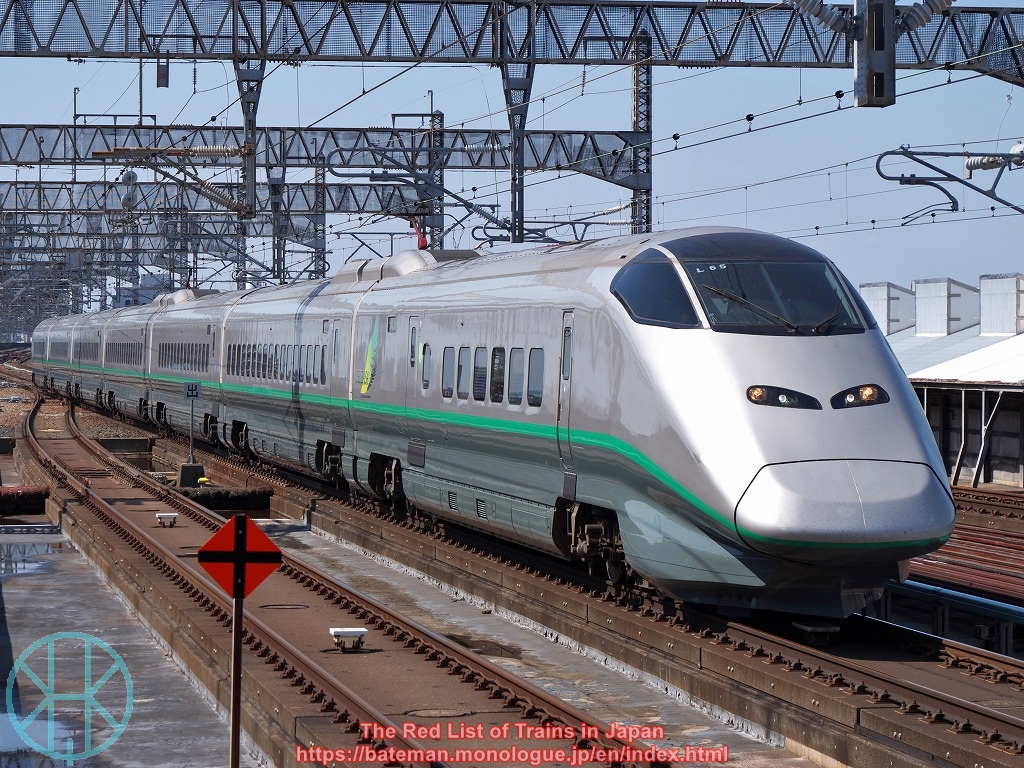E3 series Bullet Train

Data (as of 29 Nov 2025)
| Status: | Critically Endangered |
| Constructed in: | 1995-99, 2002-05, 2008-10 |
| Number built: | 261 |
| Registered: | 35 |
History
The E3 series is the second mini-Shinkansen, developed for Akita and Yamagata Shinkansen. Its maximum speed is 275 km/h (171 mph) on high-speed rail, and 130 km/h (81 mph) on non-high-speed rail. They initially formed of five coaches, but soon became six. Those on Yamagata Shinkansen consist of seven. The couplers of the series are compatible not only with E2 series, but also 200 series, E4 series and E5 series.
The E3 series were introduced to Komachi (Tokyo - Akita) services when Akita Shinkansen was opened in 1997. They were also introduced to Tsubasa (Tokyo - Shinjo) in 1999, when Yamagata Shinkansen was extended from Yamagata to Shinjo. In most cases, they formed 16 or 17 coaches together with the E2 or E5 series.
Following the introduction of E6 series, the E3 series was withdrawn from Komachi by 2014. Many of them were scrapped, but some were reallocated to Tsubasa, replacing 400 series (1992-2010).
Two redundant units were converted to special units for rail tours. The first one is Toreiyu, an onsen (hot spring) train. The other one was Genbi Shinkansen, the first art museum train on high-speed rail in the world. They were withdrawn in 2020 and 2022 respectively.
Current Operations & Future Prospects
The E3 series is now used for Tsubasa (Tokyo - Shinjo via Yamagata) and a few Nasuno (Tokyo - Nasushiobara) services. JR East has been replacing the E3 series with E8 series since 2024. All but two remaining trains will retire by the end of 2025. JR East plans to convert a unit to a freight high-speed train in 2026, and another unit will be transported to India where it will be used as a measurement train.
Photos

The prototype unit looked apparently different from other units.

Tsubasa units were initially painted silver and green. A unit was restored to it in 2023.

Now, Tsubasa units are painted as such - white and purple with red and orange stripes.
(Updated: 29 Nov 2025)
